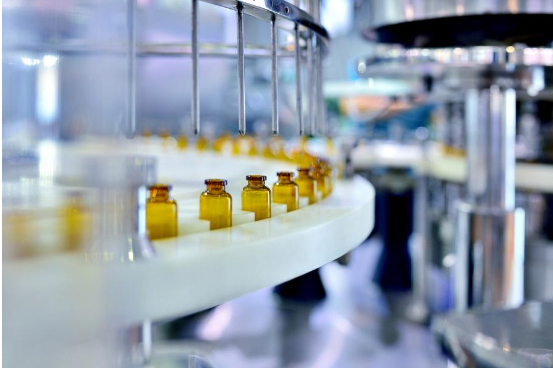The use of technology in healthcare delive
Technology has revolutionized countless industries over the past two decades, with advancements that have helped boost productivity, streamline workflows and deliver higher-quality work. These advancements have also freed up professionals for more creative work, eliminating mundane administrative tasks and busy work. The impact of technology is particularly evident in the healthcare industry. It has had a hugely positive impact on how patient care is delivered – freeing up space in hospitals, enabling nurse and staff time to be used more effectively, and most importantly, delivering higher levels of care to patients.
The development of technology and its implementation into healthcare has been rapid, and here in 2023, it continues to change healthcare for the better. In this article, we’ll explore the exciting new technologies that will help drive our industry forward, from more streamlined communication and data accessibility to the use of artificial intelligence. But before we dive into these new technologies, what is healthcare technology exactly?
What is healthcare technology?
Technology in healthcare is any piece of tech, whether it is hardware, software or a network, that assists healthcare professionals in performing their jobs more effectively. However, it can also mean the innovation involved with changing how things are done, such as using software apps to conduct follow-ups and deliver test results, rather than manual admin and paperwork – or the induction of AI-based technology into the industry, of which we are just at the beginning. Now that we’ve defined healthcare technology, what benefits are involved?
The benefits of technology in healthcare delivery
The move toward a more technological-based healthcare approach comes with an array of advantages. The bottom line is that it helps us deliver better care, streamline processes, reduce costs and free up time. Here are just some of the most notable benefits:
- Operational efficiency
- Integrated patient care
- Admin automation
- Clinical processes
- Easier collaboration
- Enhanced capacity for innovation
- Patient care
- Reduced costs
Now that we know what tech can do, let’s discover some of the latest trends and techs that are taking the healthcare industry to the next level. In the sections below, we’ll look at both the emerging trends and the technologies that are most prominent now, and what we can expect to become more prominent in 2023 and beyond.
How is technology changing healthcare delivery?
Data and information accessibility
As with all industries in recent years, there has been a massive increase in the availability of data. Healthcare professionals can now utilize the intranet, data capture and search features when delivering care to patients. Large amounts of data information can now easily be stored, shared and accessed by relevant parties throughout the caregiving process. These vast amounts of data allow everyone to benefit from healthcare research studies. Additionally, the group base that research is conducted on is vaster and more diverse – providing more accurate insights and analytical capabilities. This information also allows healthcare professionals to stay ahead of healthcare trends and techniques.
Arguably, the most significant benefit of data accessibility in healthcare is the ability to give better care. More data points and more accurate data mean that we can identify risk factors more quickly, recommend the correct treatment, and compare current patient information with historical data. On a smaller, more local scale, access to data also allows healthcare professionals to reduce costs, improve patient quality of life, and streamline internal processes. Using data trend analysis, healthcare professionals can use data to allocate staff accurately based on real data, plan resources, allocate budgets and reduce wait times.
Communication
Lack of effective communication is one of the biggest roadblocks when it comes to healthcare, increasing wait times and leading to missing information and delays. Additionally, the breakdown in communications between departments, locations, and even within teams and relevant parties leads directly to a low level of care. These communications have become smoother thanks to technology. From online discussion boards to messaging, video and access to electronic medical platforms, everyone has access to real-time, relevant data. This allows each department to quickly transfer records and access information, ultimately allowing them to provide efficient care to all patients.
Artificial intelligence
We’re very much at the beginning of using artificial intelligence (AI) in healthcare, and what it might do for our industry in the future is exciting. Perhaps the most exciting aspect of AI is machine learning. This describes a computer or machine’s ability to learn and adapt its output accordingly. Thanks to machine learning, AI no longer needs to follow a set of pre-determined rules set manually by humans. Instead, computers used in healthcare can make their own decisions – updating information, making accurate predictions, and creating their own rules and responses.
Semi-autonomous robots are already in place in many healthcare facilities – and no, these mobile care units are not something from a sci-fi movie. These care units are already in place, and are basic forms of AI, but they still require significant manual input. However, as our knowledge of AI and machine learning improves, these care units may become fully automated – and how exciting is that?
Additionally, AI chatbots and virtual assistants can be used to free up staff time, reduce costs and improve efficiency simultaneously. Basic questions and inquiries can now be handled by automation, which can give instantaneous responses, provide education and direct more urgent issues to the relevant parties. Most websites and healthcare facilities are already implementing the use of this type of AI.
Medical imaging technology
Medical imaging technology includes various aspects including ultrasound, X-ray, magnetic resonance imaging (MRI) and positron emission tomography (PET). While these technologies have been in place for a long time now in the healthcare industry, the ability to scan and highlight diseases and problems more efficiently is only increasing. As we can achieve more detailed images of the body’s internal structure, we’ll be able to provide diagnoses more quickly.
Healthcare robotics
One of the most exciting uses of technology in healthcare is surgical robots. These robotic-assisted systems allow surgeons to perform procedures with more precision, and to some degree, eliminate human error. Systems such as the da Vinci Surgical System mean that surgeons can carry out surgeries with more control. They have a robotic arm that replicates the surgeon’s actions, but with a higher level of dexterity during vital surgeries where a surgeon can’t afford to make errors. These robots can assist with tricky surgeries and help patients receive a less traumatic experience through smaller incisions in the skin and muscles, which reduces blood loss. These robots can improve recovery times and also assist with rehabilitation.
Mobile apps
Mobile apps have become vital in healthcare. They are critical in improving accessibility to patients and healthcare professionals. These healthcare apps enable people to manage their health from the comfort of their living room using a smartphone. From check-up prompts to accessing medical information, and access to test results, everything is streamlined. This then frees up physicians’ time, reduces wait times, and makes processes more efficient overall. Mobile apps also mean that data can be accessed easily regardless of location.
Automation
In an extremely regulated industry, manual administrative work and data input are hugely time-consuming aspects of healthcare work. Whether it’s medical or non-medical admin, all regulations need to be followed stringently. But what if you could outsource some of this using automation? Automation improves workflows, saving time and improving efficiency – for example, a patient fills in a form online, which triggers an online automated response, and the form is then sent to the appropriate party.
Centralized knowledge repository
Like data, having access to accurate knowledge resources is critical. From information on patients to supporting documentation processes, staff need access to information quickly and easily to get back to delivering care. The longer this information takes, the longer the wait times and the lower level of care. Online document storage/information means that staff don’t need to sift through filing cabinets or keep a patient waiting just to access the required information. Instead, they can simply log on and within a click or two, pull up everything they need. These repositories can be updated in real time automatically, and the homepage of these automated information bases can highlight urgent issues, helping to increase workflow and assisting healthcare professionals to deliver better care.
Remote wearable devices
Remote wearable devices provide real-time patient data. They are used to make treatment decisions and provide healthcare workers with a deeper understanding of a patient’s condition. These devices can also provide surveillance, screening assistance and help with ongoing patient management. Remote devices mean that nurses don’t have to visit patients at their homes or bring them into care facilities, freeing up time and space and drastically reducing costs. Most notably, this improves accessibility and removes barriers for those who need care in more remote locations. It prevents healthcare staff from having to travel long distances to remote locations, or worse still, patients having to travel a long way to get the necessary medicine and treatment.
For long-term, ongoing care, these devices mean that patients can track vital signs at home, such as blood glucose levels and heart rate, etc. The information and data from these devices are then transmitted to healthcare workers, who can monitor and intervene if necessary, but only if necessary. This not only affords patients more control over their lives, but also helps them recognize early warning signs of more serious issues. Again, this reduces hospital wait times, frees up beds, and allows staff more flexibility.
A career in healthcare
Does a career in healthcare appeal to you? If so, then choose an online nursing degree and learn everything you need to know about delivering amazing patient care. Become part of an industry where technology will help us strive, succeed and make a genuine difference in people’s lives. You can learn more about online AGNP programs by visiting Wilkes University’s website, linked to here.
Final thoughts
From AI to remote wearable devices, mobility, data accessibility and communication, there are a large number of benefits, and ones that will only increase as we continue to develop and innovate. However, this is not to say that the wider adoption of tech in healthcare comes without its challenges. For instance, data privacy concerns and security remain one of the largest issues of our time, and everyone from healthcare professionals to developers must work hard to ensure digital safety and keep the focus firmly on delivering better patient care. Additionally, with AI being very much in its infancy, it can’t be relied upon entirely. However, it’s exciting to see what technology and innovation are going to do in healthcare in the future. We do not know exactly what advanced tech will be capable of, but what we do know is that we will be able to deliver better care in less time, and more efficiently




